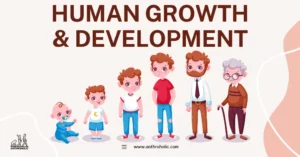AI Answer Evaluation Platform Live Now. Try Free Answer Evaluation Now
Matrilineal Descent
The intricate tapestry of human kinship systems across cultures has fascinated anthropologists for centuries. Among these systems, matrilineal descent holds a distinct place, presenting a unique perspective on familial relationships and social organization. In this anthropological exploration, we delve into the rich and multifaceted world of matrilineal descent, examining its characteristics, functions, and significance within various societies.

Understanding Matrilineal Descent: A Conceptual Framework
Matrilineal descent refers to a system of kinship in which ancestral lineage and inheritance are traced through the female line. In matrilineal societies, individuals identify with their mother’s kin group, and family ties are predominantly established through maternal lineage. This contrasts with patrilineal descent, where lineage is traced through the male line.
Key Features of Matrilineal Descent
- Matrilocality: A common aspect of matrilineal societies is matrilocality, where a married couple resides with or near the wife’s family. This residence pattern promotes strong bonds between maternal relatives and fosters the transmission of cultural practices and traditions from one generation to the next [1].
- Maternal Authority: Matrilineal systems often grant women significant authority and decision-making power within the family and community. Women may hold positions of leadership, possess property rights, and play crucial roles in the economic and social spheres of their societies [2].
Matrilineal Descent in Practice: Case Studies
- Minangkabau, Indonesia: The Minangkabau society exemplifies a matrilineal kinship system. Inheritance of property and wealth occurs through the female line, and women have substantial control over family affairs. Matrilineal descent among the Minangkabau reflects the deep-rooted belief in the strength and wisdom of women in maintaining social harmony.
- Mosuo, China: The Mosuo people, residing near the shores of Lugu Lake, follow a matrilineal kinship structure. Here, women hold property and inheritance rights, while the role of fathers in child-rearing is secondary. The Mosuo society underscores the significance of maternal bonds and challenges the prevailing notion of patrilineal family structures.
- Khasi and Garo, India: Matrilineal descent systems can also be found in India, particularly among the Khasi and Garo communities of Meghalaya state. In these societies, children trace their lineage and inherit their mother’s property, and family names are passed down matrilineally. The matrilineal kinship system in India demonstrates the complex interplay between cultural traditions and social organization.
The Functions of Matrilineal Descent
- Social Cohesion and Cooperation: Matrilineal descent systems often promote strong bonds among maternal relatives, fostering cooperative networks that contribute to the social stability and resilience of the community [3].
- Gender Relations and Equality: Matrilineal societies offer an alternative to patriarchal norms, enabling women to occupy influential positions and enjoy greater gender equality. The matrilineal kinship structure challenges traditional gender roles and can provide a foundation for women’s empowerment [4]
Anthropological Perspectives and Critiques
- Cultural Relativity: Anthropologists emphasize the importance of understanding matrilineal descent within its cultural context, highlighting that no single kinship system is universally superior or inferior to another. It is essential to approach these systems without imposing external value judgments [4].
- Adaptation and Change: Matrilineal systems are not static entities; they evolve over time in response to various social, economic, and environmental factors. Anthropologists investigate the forces that shape these changes and how societies adapt to new circumstances while maintaining their core principles of matrilineal descent [4].
Conclusion
Matrilineal descent offers a captivating lens through which to explore the diversity of human kinship systems. This anthropological journey has revealed the defining characteristics, functions, and cultural significance of matrilineal descent, as well as its real-world manifestations in societies such as the Minangkabau, Mosuo, and the Khasi and Garo of India. By unraveling the complexities of matrilineal descent, we gain deeper insights into the intricate fabric of human societies and the multitude of ways in which kinship is constructed and maintained.
Suggested Articles
| What is Descent? | Principles & Types | Bilateral Descent |
| Ambilineal Descent | Double Descent | Patrilineal Descent |
| Descent Groups | Descent and Alliance | Unilineal Descent |
References
[1] Benedict, R. (1935). Patterns of Culture. New York, NY: Houghton Mifflin Company.
[2] Dahlberg, F. (1977). Woman the Gatherer. New Haven, CT: Yale University Press.
[3] Eriksen, T. H. (1995). Small Places, Large Issues: An Introduction to Social and Cultural Anthropology. London, UK: Pluto Press. https://www.researchgate.net/publication/31845615_Small_Places_Large_Issues_An_Introduction_to_Social_and_Cultural_Anthropology_TH_Eriksen
[4] Schneider, D & Gough, K. Matrilineal Kinship. Berkeley, CA: University of California Press. https://indahwidiastuti911.files.wordpress.com/2012/05/david_m-_schneider_kathleen_gough_matrilineal_kinship____1961.pdf




